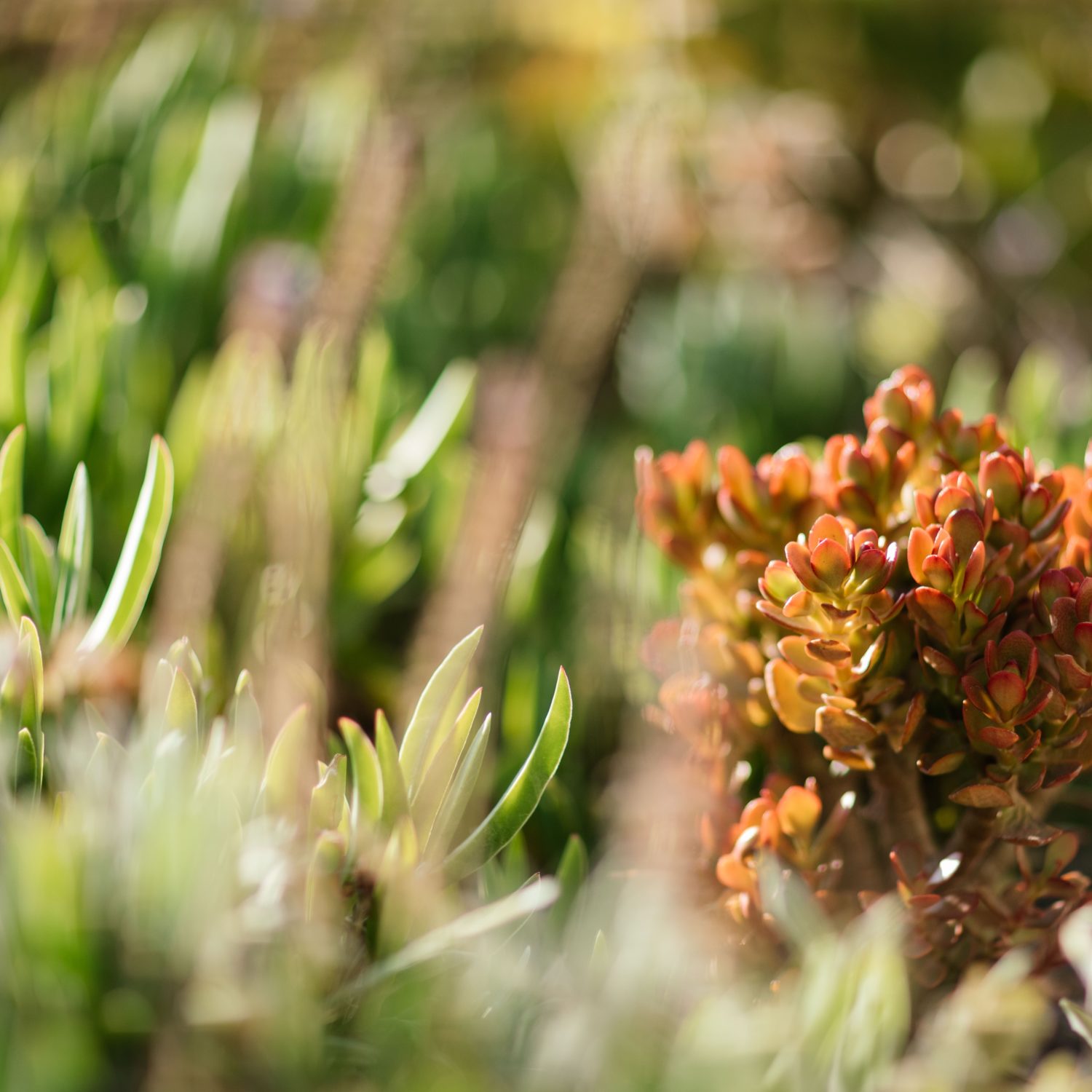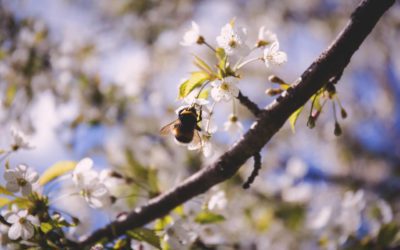Here are 5 things you (probably) didn’t know about Fynbos:

One of Greenpop’s school gardens celebrating biodiversity.

Aloe is another species in the Cape Floral Kingdom finding use in many cosmetic products.

Sour figs serve as soil-protecting carpets within the fynbos family.

Before growing fruit sour figs flower in bright pink and yellow colours.

The Cape Floristic Region showcases plants in many different shapes and forms.

Put together nicely the fynbos family can create unique and special gardens.
At first look, it may be easy to miss the beauty of Fynbos, but upon closer inspection, you can witness the amazing diversity of the fynbos family.
More than 9600 species can be found within an area less than 90 000 km2.
In addition, the Cape Floristic Region is a recognized biodiversity hotspot and one of the world’s six floral kingdoms. It is the smallest of the six and the only one located in a single country. But considering the number of unique species, it’s by far the richest.
What makes this level of biodiversity even more special is the high rate of endemism. A species of plant qualifies as endemic if it grows nowhere else in the world but one specific, geographic location. That’s the case with the more or less 70% of the fynbos species.
The Khoisan were the first to use fynbos for medicine in healing – and it is still being used today by natural healers and in modern medicine.
The Sour Fig (Carpobrotus Edulis) is one such plant. It’s found in many gardens or in beds along the streets. The juice from the leaves serve as a natural antiseptic and is a great partner in treating mouth and throat infections as well as wounds and burns.
Another fynbos plant, the rose-scented Pelargonium (Pelargonium Capitatum), is used in cosmetics as a fragrance and a skin softener. The leaves also work as a healing tea, same as other species like Rooibos (Aspalathus Linearis), Dune Sage (Salvia Aurea), and Cape Mistletoe (Viscum Capense). Those are known to have good effects on coughs, colds and even asthma and bronchitis.
Fynbos is a pyrophyte or fire-tolerating vegetation.
It needs fire for two reasons: to support seed germination and to act as a mineralizing agent. To support regeneration, Fynbos should burn every 10 – 25 years, however, frequent fires can also have a damaging impact on the seed bank.
Other factors that impact the regeneration are the intensity of the fire, the time of year and the area of growth.
Fynbos and the habitat of the Cape Floral Kingdom are of crucial importance to some animal species, who depend on its existence. It’s a very specific habitat and type of vegetation, so most of its occupants are endemic.
These species include six bird species, which also play an important role in the pollination of plants like the ericas and proteas. They share this job with a notable number of butterflies, who love the conditions in fynbos and thus at risk since their habitat is getting smaller.
Another spectacular occupant of the area is the geometric tortoise. Its habitat is very restricted and in the 1960s the population was already considered extinct. That was before a small group of survivors were found in the 1970s and has since then been conserved.
More than 1700 fynbos species are critically endangered, endangered or vulnerable according to SANBI. With urbanization and human development being the largest threat to the Cape Floral Kingdom, it is one of the world’s most threatened biodiversity hotspots.
Luckily in the last few years, public awareness around the vulnerability of fynbos and the Cape Floral Kingdom has increased. Many projects address the issues and work on regrowing the fynbos population. Also, in 2004 the UNESCO officially enlisted it as a World Heritage Site. In an extension in 2015, they raised the number of protected areas from eight to thirteen.
———
Donate to Greenpop’s Fynbos for the Future program, and help us plant fynbos gardens at under-greened schools across the cape.
Donate here.
Photos by: Juliette Bisset
Arbor month : These men have #GotWood.
These South African men have got wood. This Arbor Month, Greenpop asked brave change makers to bare it all for trees. And the results are spectacular. What started out as a joke during a brainstorm quickly grew into Greenpop's boldest fundraising effort to date. With...
20 trees for the bees this World Honey Bee Day
20 trees for the bees this World Honey Bee Day 18 AUGUST, 2016 Guest post by: Life Green Group & Catherine Clulow (The Botanical Society of South Africa) Bees are one of the most important insects, if not animals, in the world as they are responsible for...
Going Green: The First 10 Steps
Going Green: The First 10 Steps 16 JUNE, 2016 By Alice Beckett We all know that ‘going green’ is an essential thing, but it can be overwhelming at times. So here are ten small, day-to-day changes that create a big impact for the environment. Recycle your waste Divide...
Greenpop Foundation NPC is a registered non-profit organisation. Registration Number (NPO): 151-411 NPO.


